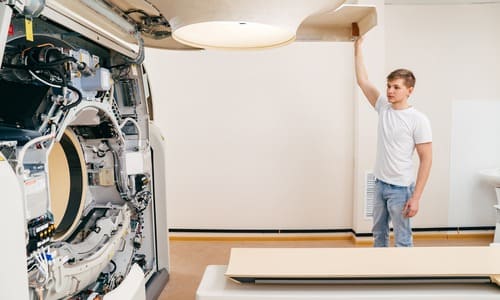 Each year, the Federal Food and Drug Administration (FDA) receives hundreds of thousands of reports of serious injury, death, adverse events, and malfunctions related to medical devices. Not all harmful products are recalled, and in many instances, patients weren’t fully prepared for the undisclosed risks they faced. In short, they trusted their doctor and medical device manufacturers to provide a means to improve their health — when it resulted in the opposite: harm.
Each year, the Federal Food and Drug Administration (FDA) receives hundreds of thousands of reports of serious injury, death, adverse events, and malfunctions related to medical devices. Not all harmful products are recalled, and in many instances, patients weren’t fully prepared for the undisclosed risks they faced. In short, they trusted their doctor and medical device manufacturers to provide a means to improve their health — when it resulted in the opposite: harm.
A medical device malfunction or adverse event can mean serious health complications. Patients may experience intense pain, infection, or degradation of their overall bodily functioning due to a defective implant. In many cases, surgical intervention is required to remove an implant. Deaths are relatively rare from this type of defective product, but lifelong complications are likely.
Let an experienced defective medical device lawyer help you manage your case and build a strong claim to recover all your damages. Singh Ahluwalia Attorneys at Law is dedicated to helping unfortunate individuals in their time of greatest need. We can provide you with comprehensive and strategically minded representation through all stages of your claim.
Find out how much your case could be worth — and what legal strategies you have available — during a free, confidential, no-risk case review. Schedule your free consultation today when you call (559) 878-4958 or contact us online.
How a California Defective Medical Device Accident Attorney Can Help
Defective medical device cases often involve complex medical, financial, and legal considerations. On top of this, device manufacturers and others involved in their usage seek to avoid liability to any extent possible. They will often refute claims that their device caused harm, or they will attempt to implicate the injury victim by stating they misused the device or otherwise contributed to their own medical affliction.
In these situations, having your own defective medical device attorney to represent you can be invaluable. With their experience and legal knowledge at your side, you can know with confidence that you are doing everything possible to look out for your financial interests.
Insurers, care providers, and especially medical device manufacturers will have their teams of high-powered corporate attorneys ready to defend them, tooth-and-nail. Don’t you deserve your own legal team at your back?
Singh Ahluwalia is prepared to assert liability and to help you recover 100% of the damages you have experienced. Many dangerous medical device cases go to arbitration, advance to multidistrict litigation (MDL), or otherwise involve complicated legal procedures and tough negotiations at every turn. Let us provide you with all the legal resources you need to build a strong case while giving you the peace of mind to focus on your medical recovery.
Common Defective Medical Devices That Cause Injury and Death
While any medical device has the potential to inflict harm when it is defective, several device categories currently see a high level of recall actions and litigation.
Some of the most common types of defective medical devices include:
- Hernia mesh
- Artificial joints (joint replacement implants)
- Prosthetic devices
- Stents
- Catheters
- Transvaginal mesh
- Contraceptive devices
- Metal screws, plates, staples, etc.
- Defibrillator implants
- Pumps
- Inferior vena cava filters
- Breast implants
- Neonatal breathing circuits
Damages Available in a Defective Medical Device Case
While every defective medical device injury case is different, many will see common groups of damages. Below are some of the most likely damages your case could involve:
- Medical care made necessary by the defective device injury
- Estimated costs of future medical care
- Lost wages, lost earnings capacity
- Financial restitution for the costs of the device and associated costs of implantation
- Compensation for pain and suffering
Strict Liability for Defective Medical Devices in California
Unlike many liability claims, someone hurt by a medical device defect may not necessarily have to prove that the manufacturer made some mistake or should have otherwise been able to foresee the harm they caused. Instead, all that must be shown is that the device caused harm, which can be enough to legally compel the manufacturer (or other at-fault party) to pay for damages.
In strict liability cases, the injured party must be prepared to show the following:
- The product was used as intended, or it was used in a reasonably foreseeable manner
- The product was in a defective condition when it left the defendant’s possession
- The defective product was the direct cause of an injury to the plaintiff
When the injured party can demonstrate all three with satisfactory evidence, there is the possibility that they will be able to succeed on a strict liability legal basis. Further, many of these cases involve the collection and presentation of further evidence of negligence, solidifying the defendant’s role in sourcing the defect and their failure to prevent the defect from causing foreseeable or likely harm to the injured claimant.
Types of Defects in a Medical Device Products Liability Case
There are three main types of defects to consider in a defective medical device case:
- Design defects affect every product created because of the likelihood of a risk to public health and safety.
- Manufacturing defects may only affect a select group of products manufactured in a specific facility or during a specific time frame. Unlike design defects, these defects emerge in the process of physically creating the product, but they still possess the capacity to inflict serious harm.
- Failure to warn defects involve a lack of acceptable risk disclosure or a lack of clear, visible, and accessible information that could have prevented a likely harm from occurring. These defects could affect the medical device when used in isolation, or they could pose dangers only in certain scenarios, like when using the device in a magnetized area.
A product could have more than one type of defect, and the defect could have arisen in conjunction with the negligent design, creation, distribution, or storage of the product by one or more parties.
Lack of adequate health and safety evaluation and/or product testing is a common reason for design and manufacturing defects. Many defective medical devices are rushed to market using the 510(k) provision for Class I or II medical devices, which enables manufacturers to avoid conducting clinical trials or submitting their manufacturing process to safety inspections. These forms of FDA approval significantly lower the costs of entering a new or revised medical device product to market — while creating serious risks to users who act as “guinea pigs” to discover whether the device possesses defects capable of inflicting harm.
Defective Medical Device Statistics
According to the FDA, they receive “several hundred thousand medical device reports of suspected device-associated deaths, serious injuries, and malfunctions” each year. Only a few of these incidents will result in a recall, as the costs and perceived risks to patients of implant removal affect the calculation of whether a recall is reasonably required in proportion to the relative risk to public health and safety.
A study of all drug and medical device recalls by the International Consortium of Investigative Journalists (ICIJ) reveals that from 2008 to 2017, there were 1.7 million injuries and 83,000 deaths from adverse events potentially linked to a defective medical device. While an adverse event is not always evidence of a defect, the fact remains that these types of injuries are far more common than the public is led to believe.
In total, almost a half million medical devices were removed (explanted) from patients following an adverse event or other cause-for-concern.
Diving further into the data, the ICIJ observed that device design flaws were the #1 cause for recall of an implantable device, showing up in 22.7% of all recall issuances. “Process controls” were the second-most common issue (11.2%), followed by “non-conforming material or components” (9.8%). The device categories with the highest volume of recalls were Orthopedic, gastroenterologic, urologic, and cardiovascular.
Who Is At-Fault in a Defective Medical Device Injury Case?
As part of conducting due diligence for your injury claim, your California defective medical device lawyer will consider all parties that could be held liable for your damages.
The device manufacturer is often determined to hold all or most of the blame in these types of claims, but that isn’t always the case. Other parties may share fault (or hold fault in entirety), such as:
- Design/engineering firms responsible for developing new patents and devices and performing initial safety & efficacy evaluations
- Laboratory testing firms responsible for examining safety & efficacy through clinical trials, surveys, virtual testing, and other means
- A prescribing or overseeing physician if their implantation or use of the device created a defect that resulted in harm, or if they failed to adequately inform and warn the patient of the associated risks
- A care provider, such as a hospital or clinic could contribute fault when their practices fail to adequately warn patients or when their storage and usage practices introduced a defect to the device
- Retail suppliers/distributers can hold partial or total fault when their handling of the device causes a defect to emerge. They may also hold fault if they introduced changes to the device design or packaging that caused new defects to emerge that ultimately led to harming the patient.
What Types of Injuries or Adverse Events Typically Allow a California Defective Medical Device Accident Attorney to Build a Strong Case?
Under strict liability systems, all measurable harm inflicted by a defective medical device (or other product) can constitute damages that are recoverable by the affected party.
At the same time, patients hurt by medical device defects often see substantial harm. Since they were expecting the device to improve their condition, this harm often comes as quite a shock to the patient. Further, because of biases toward the assumption that the device is providing the benefits expected, physicians and other parties may be reluctant to blame the device when an adverse event emerges. Delaying identification of a harmful device flaw leads to more inflicted harm and potential complications affecting the patient.
Below are some examples of events that could result when a defective medical device is used.
Device Failure & Malfunction
A medical device failure renders the device unusable — likely affecting the health condition that the device was intended to treat. As an example, a total knee replacement implant may seize up, making it impossible for the patient to use their knee without substantial pain, discomfort, or injury.
A device can also partially malfunction without experiencing total failure. Patients may experience a decline in their condition or the emergence of new symptoms as a result of the malfunction. Examples include surgical screws that loosen over time and hernia mesh that causes tearing or irritation in the area of implantation.
Adverse Events (Emergence of a Novel Health Crisis)
Device failures and malfunctions can cause a number of possible adverse events. Patients are often admitted with new or worsened symptoms, and the defect in their medical device is later pinpointed as the primary root cause.
An adverse event triggered by a medical device defect can be serious, potentially even life-threatening. It may cause new injuries or medical disorders to emerge, or it may cause the worsening of a previous condition that would have otherwise remained stable or improved without the harmful influence of the device.
Common symptoms and adverse events experienced by patients affected by defective medical devices include:
- Chronic pain
- Infection
- Toxicity
- Auto-immune response (rejection)
- Exacerbated condition
Let a California Defective Medical Device Accident Attorney Help You
When you have been hurt by a defective medical device, you may feel scared and as if you have nowhere to turn. Insurance companies and manufacturers may reject your initial claims and deny liability, making it seem as if you are expected to pay for the costs of your damages all on your own.
In these situations, know that Singh Ahluwalia can be there to help you. We have built our California personal injury law firm on the values of helping people stand up to systems that try to intimidate them into backing down. You have legal rights, and we want to defend them. Our firm speaks English, Punjabi, Hindi, and Spanish in order to serve communities that all too often lack access to legal resources. Know that when you work with our firm, you have someone at your side to keep you informed and to help you feel as empowered as possible while you seek to recover your losses.
Learn more about your case and how to pursue damages from all liable parties during a no-cost, no-obligation case review. Schedule your free case evaluation today when you call (559) 878-4958 or contact us online.


